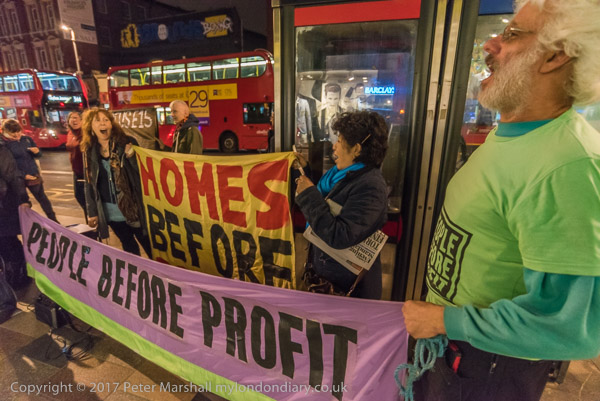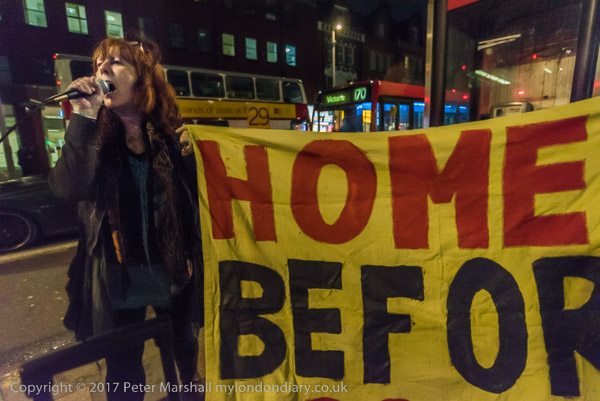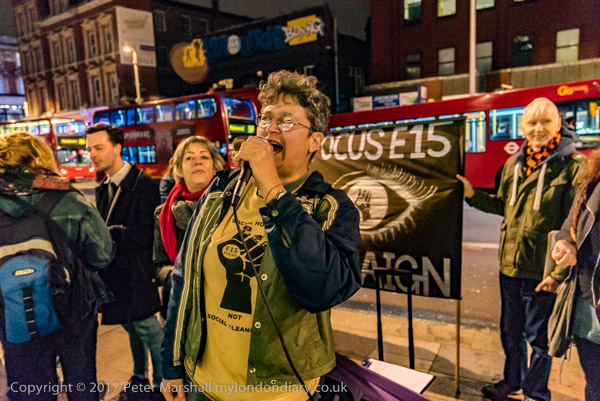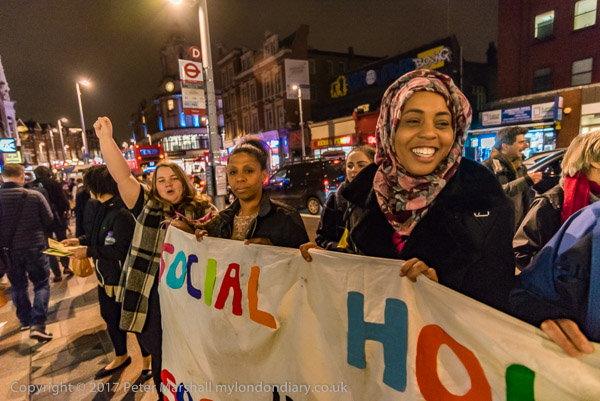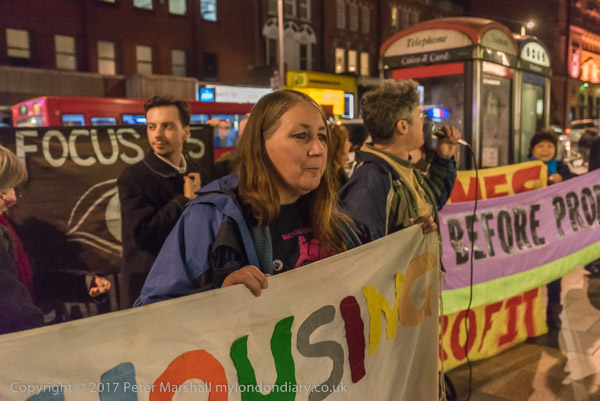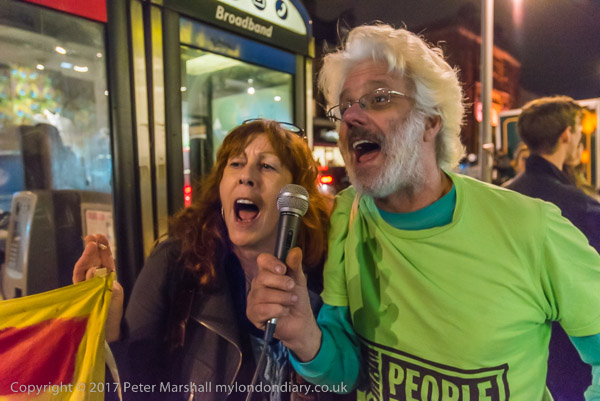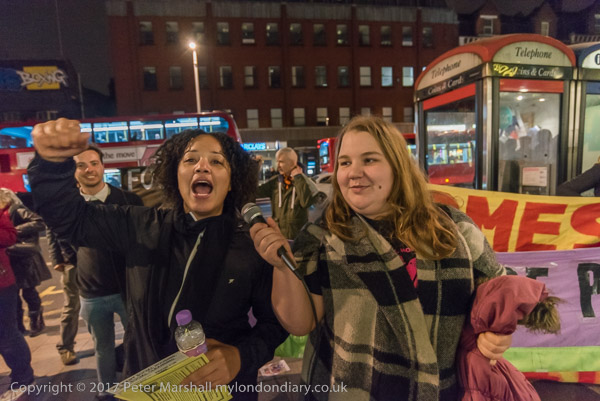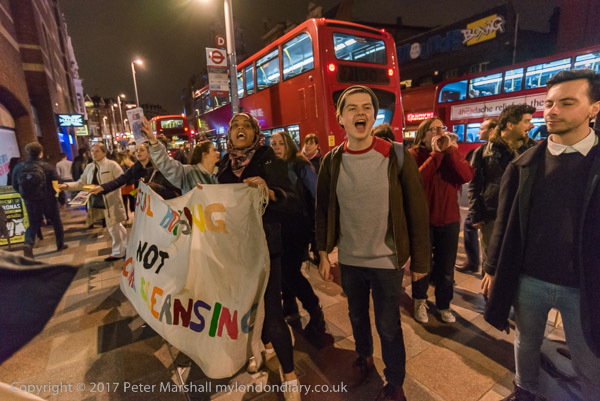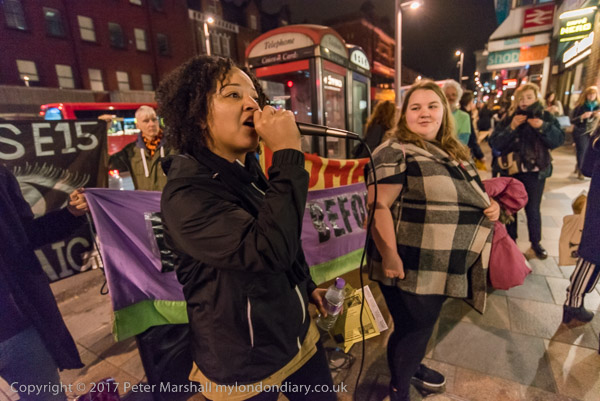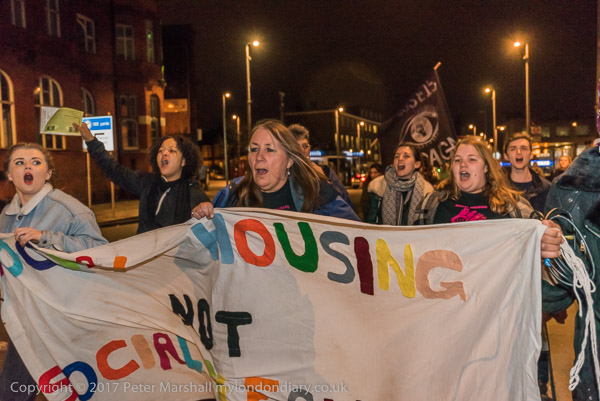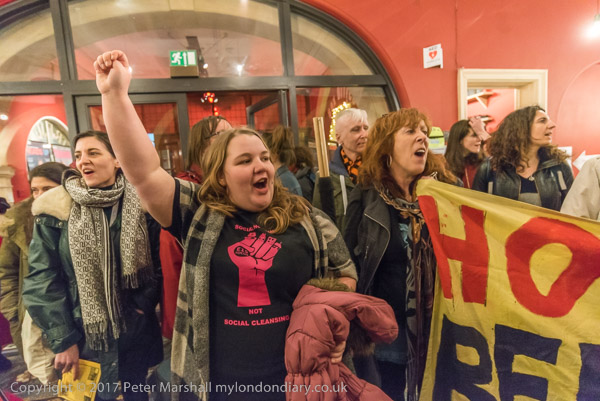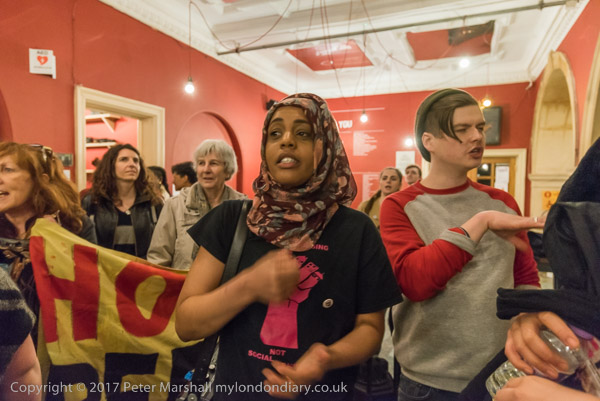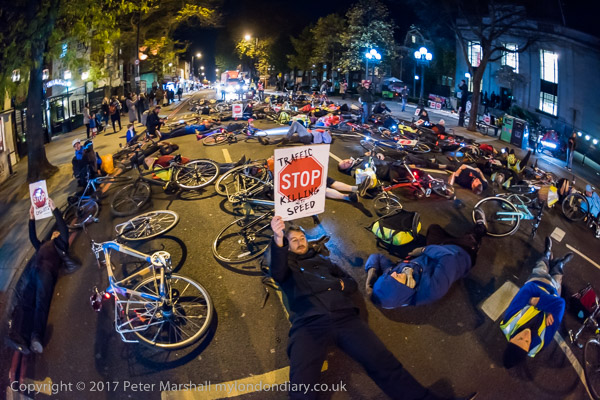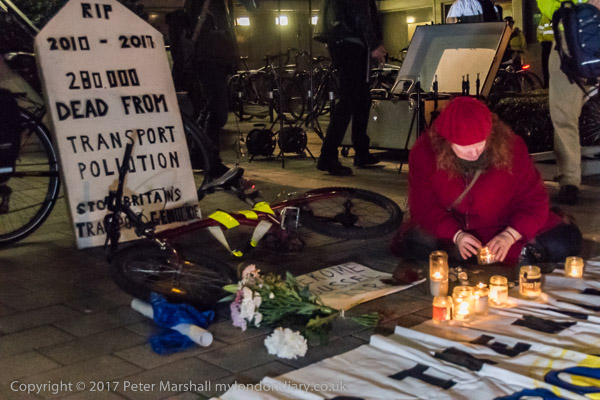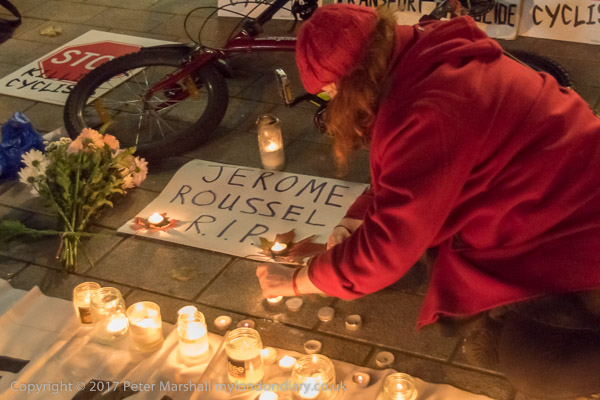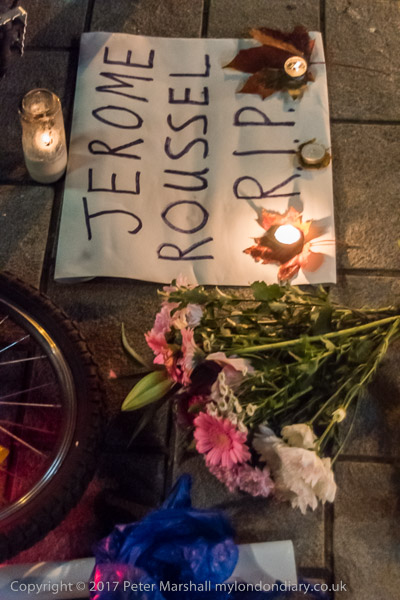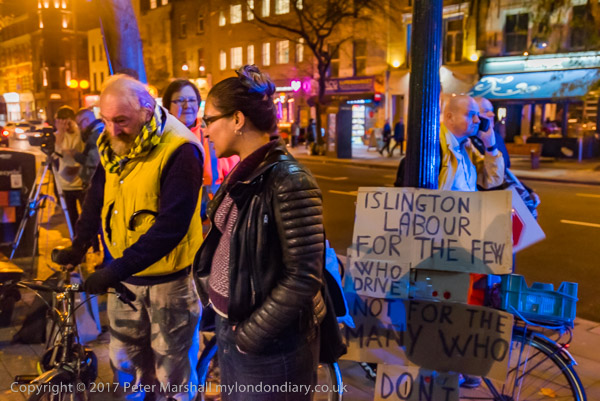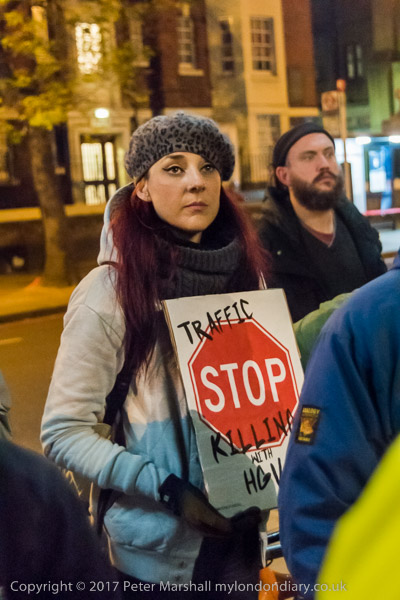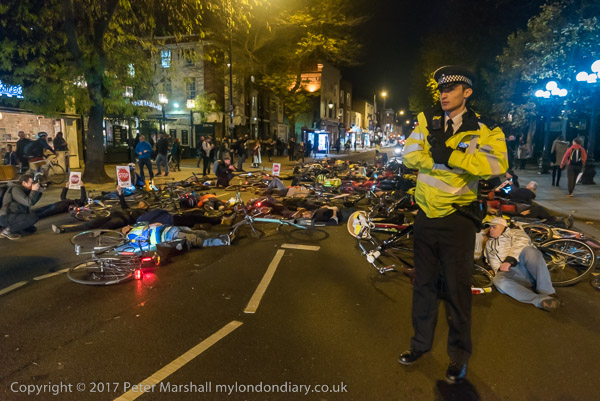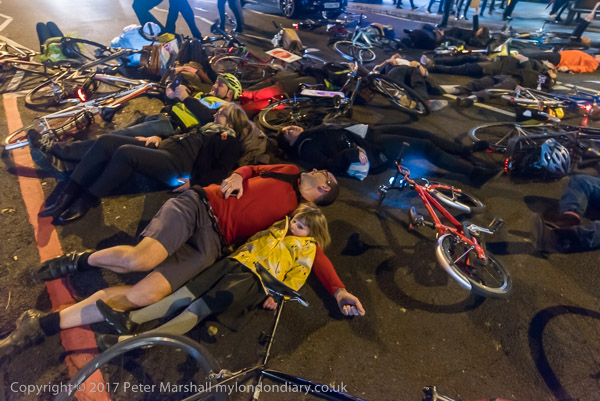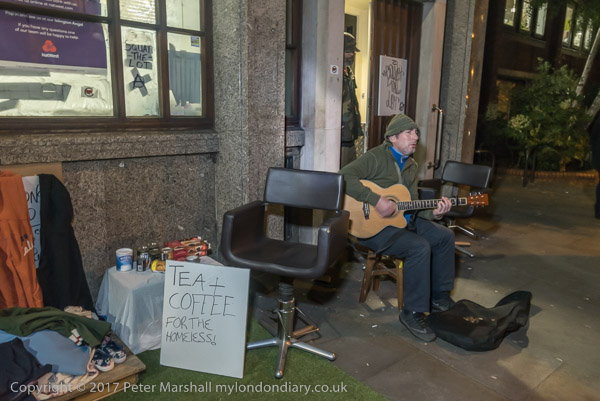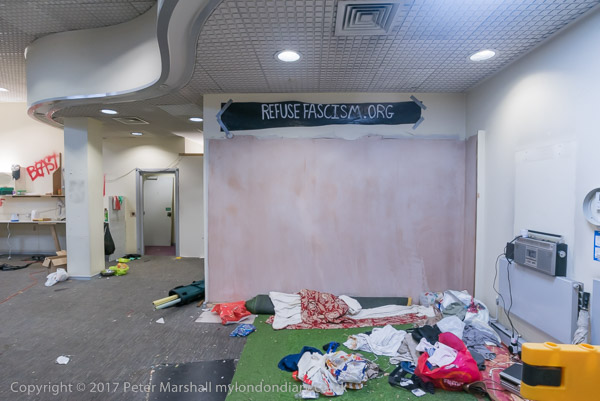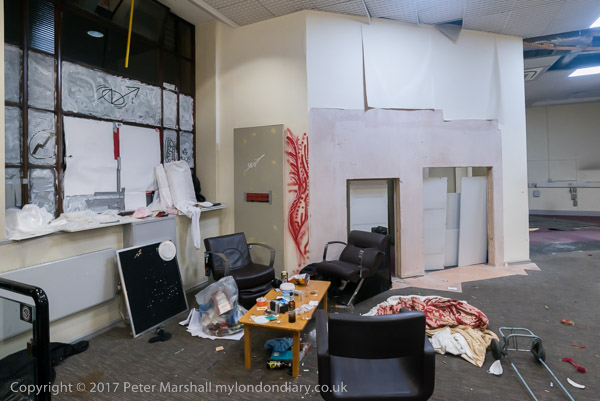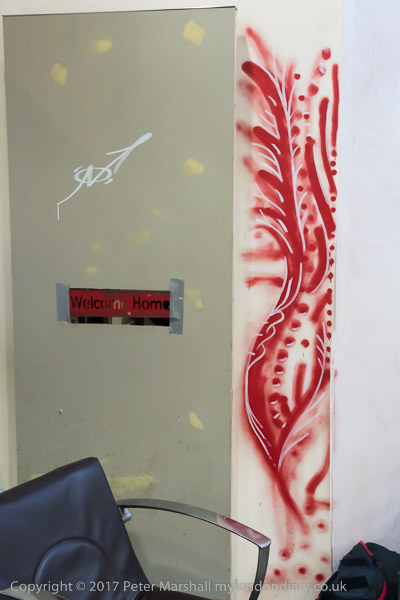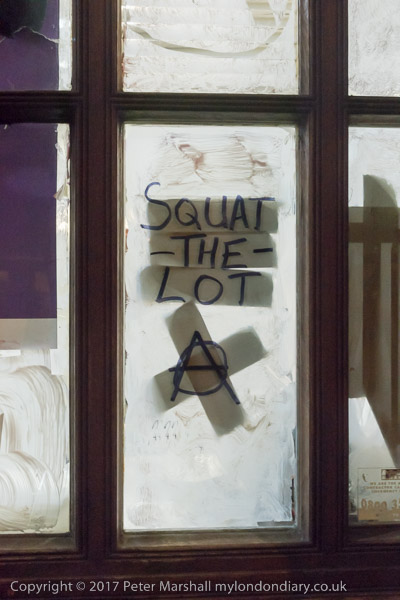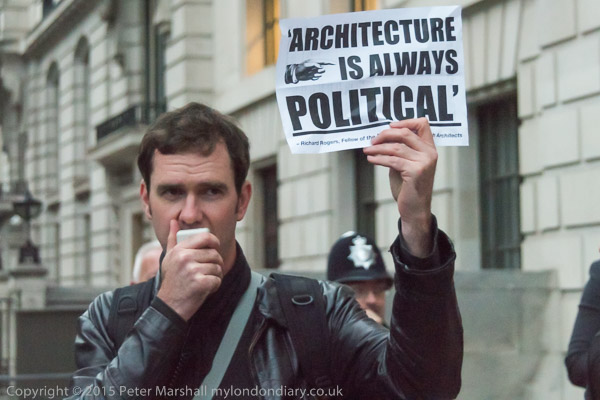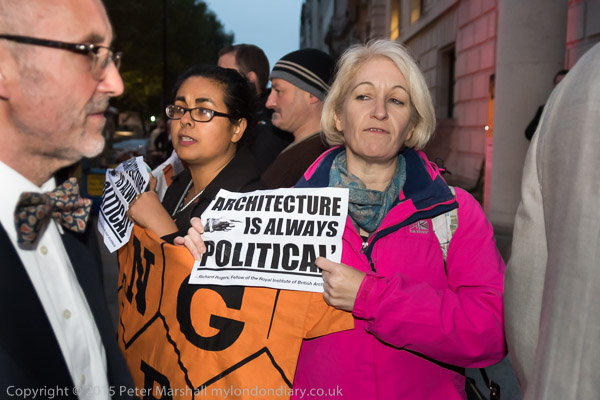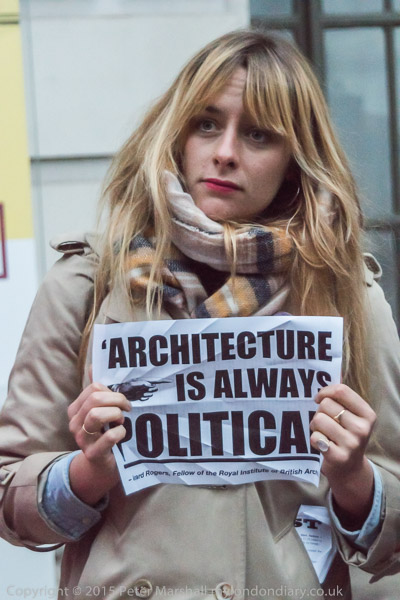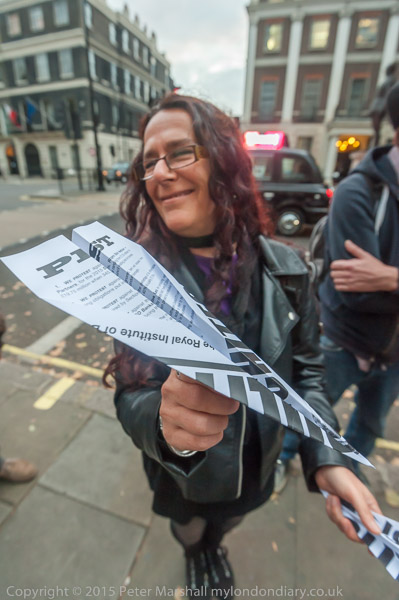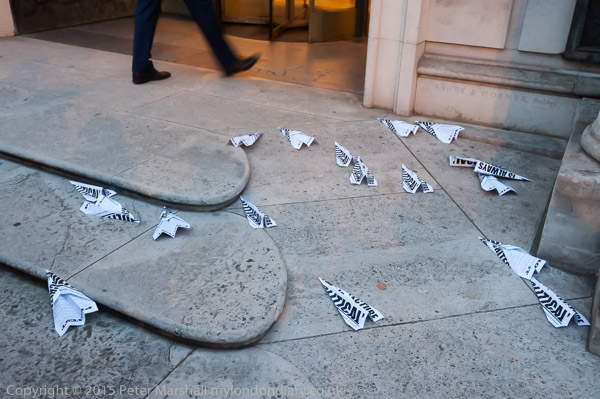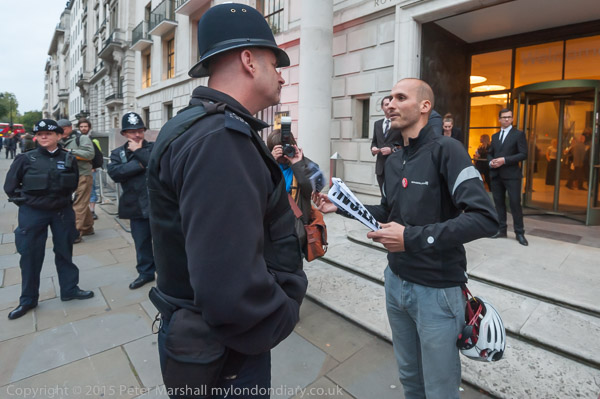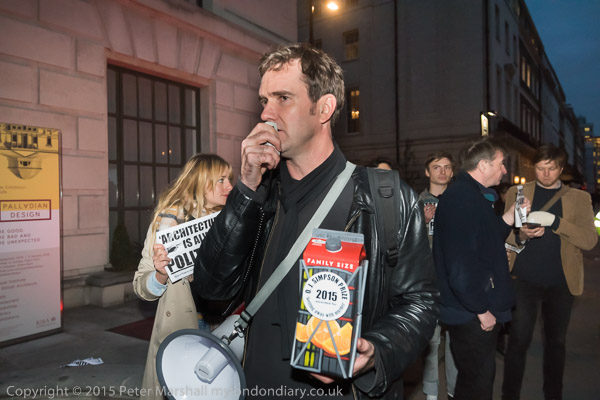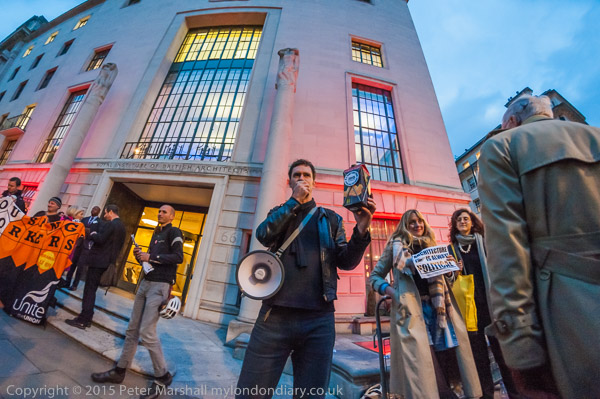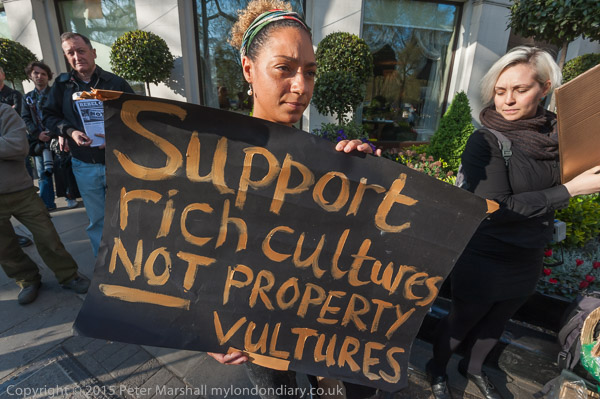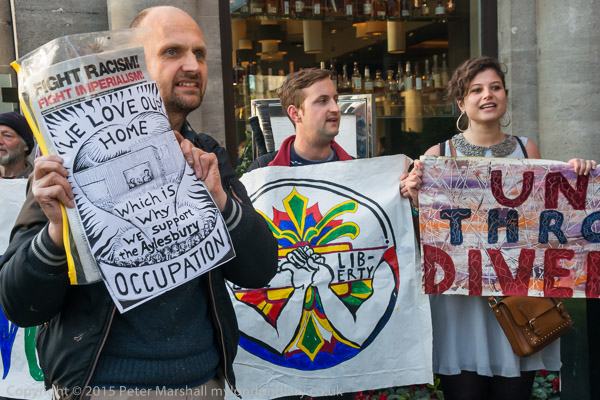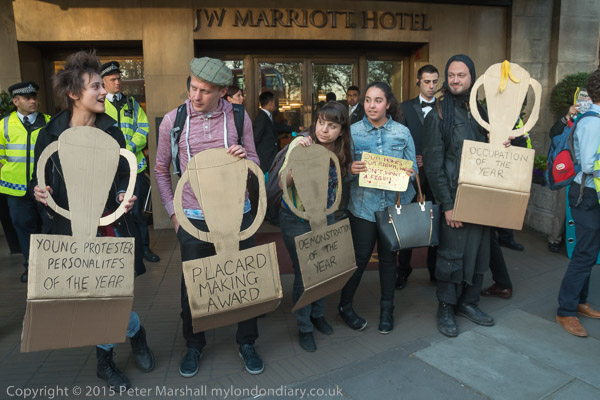Greedy Property Developers Reward Themselves: Eight years ago on Tuesday 12 April 2015 I photographed housing activists protesting outside the expensive dinner at a Mayfair hotel for the 2015 Property Awards. The protesters held their own alternative awards ceremony for housing protesters as a part of the event.
Among those in my pictures is Aysen from the Aylesbury Estate. The Fight4Aylesbury exhibition in her flat on the estate continues today, Friday 21st April 2023, and on Saturday 22nd and Sunday 23rd. Parts of some of my pictures from this event were used in collages in that show.
Property Awards at Mayfair Hotel – Grosvenor House Hotel, Park Lane
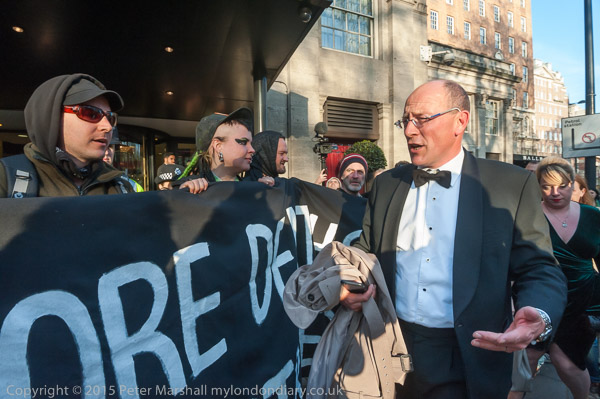
Property developers have powered the incredible rise in London Housing prices by building luxury flats for mainly overseas investors, many of which remain unoccupied to be sold later at even higher prices to other investors, and also by working with London councils to redevelop social housing largely for private sale.
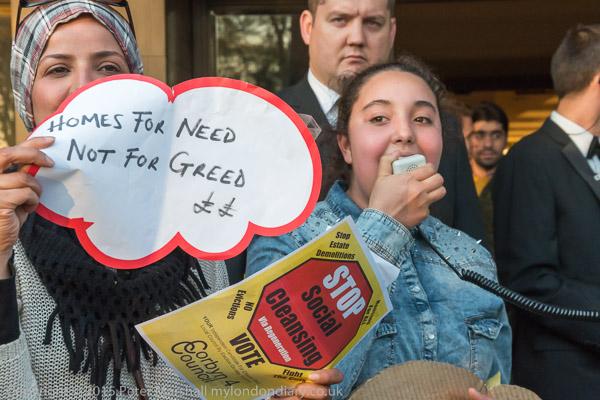
Together with the actions of successive governments – Tory and Labour – they had created what by 2015 was clearly the worst shortage of affordable housing in history, with a record number of evictions and the doubling of rough sleeping in London. Over 50,000 families have had to move out of London while many more properties in the capital remain empty.
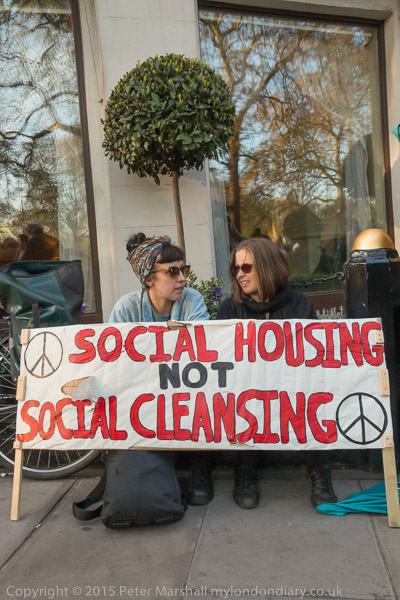
As I wrote: “Housing in London has ceased to be something to meet human need, and instead is servicing greed and selfishness.” And the expensive dinner taking place that evening in the luxury Mayfair hotel was to give awards to the property developers for their greed. Among those taking part in the protest outside were people from estates which are being redeveloped, including Southwark Council’s Aylesbury estate and Sweets Way in north London who were facing eviction because of the policy of social cleansing driven by councils and developers.
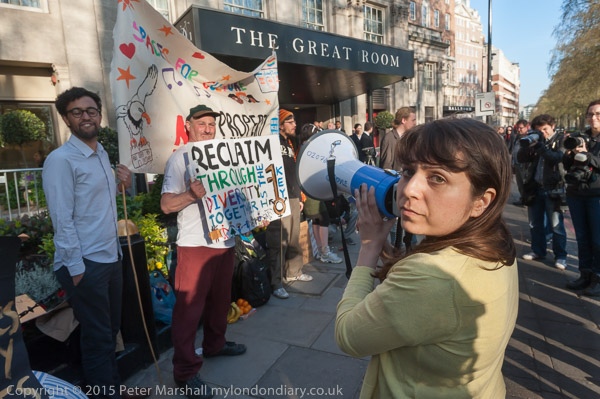
People arriving at the dinner were met by a noisy crowd calling for a fair housing policy outside the ‘red carpet’ entrance to the hotel on Park Lane and had to walk past the protesters to enter. Police tried to keep the entrance clear and some hotel staff directed the guests to other entrances to the hotel, where the protesters also followed.
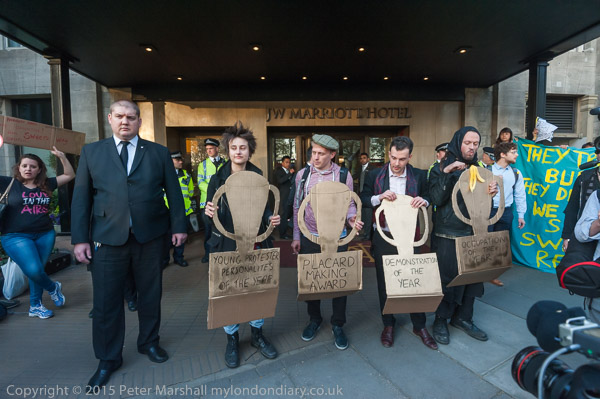
The protesters held an alternative awards ceremony in front of the hotel entrance, awarding large cardboard cups for the Young Protester of the Year, Placard Making, Demonstration of the Year and Occupation of the Year.
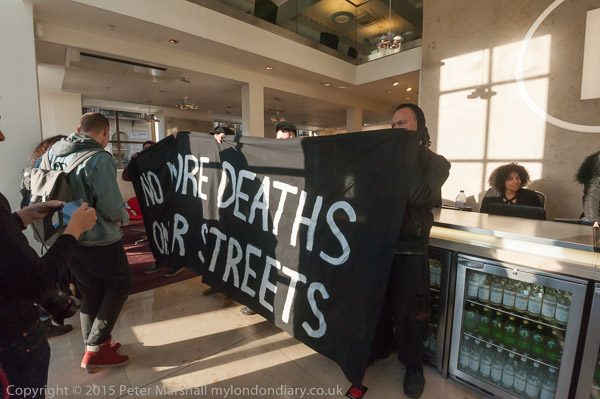
Protesters also briefly occupied occupied a neighbouring branch of estate agents Foxton, who have played a leading role in the gentrification of London. Together with other estate agents they have also been an important influence on the housing policies of both Tory and Labour.
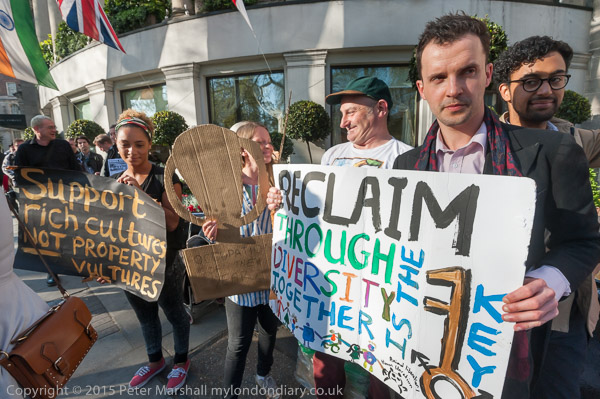
Foxtons is notorious among those who rent property for driving up rents – and in 2022 the London Renters Union reported that their annual revenue had increased by £5m as rents in London went up by an average of 20.5% in 3 months, with one Foxtons tenant reporting a rise of £12,000 per year!
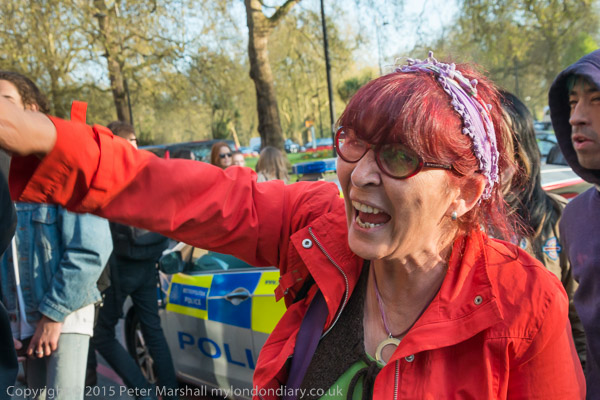
Shortly before I left it became clear that most of those coming to the dinner were being directed to a rear service entrance to the hotel and the protesters moved around the block to hold a rally there. The gate was rapidly closed and there were some minor scuffles as police attempted to move the protesters away. I heard later that there had been two arrests after I left.
Many more pictures at Property Awards at Mayfair Hotel.
